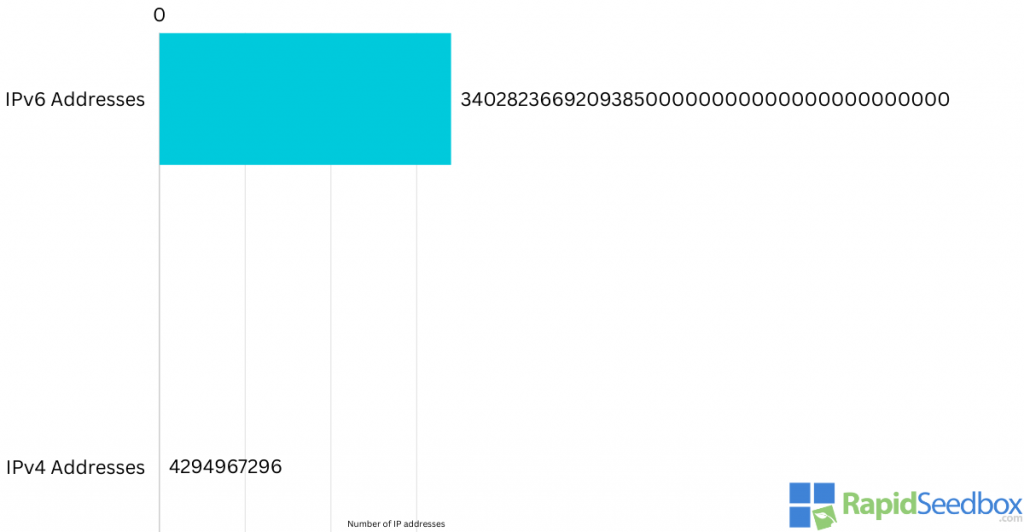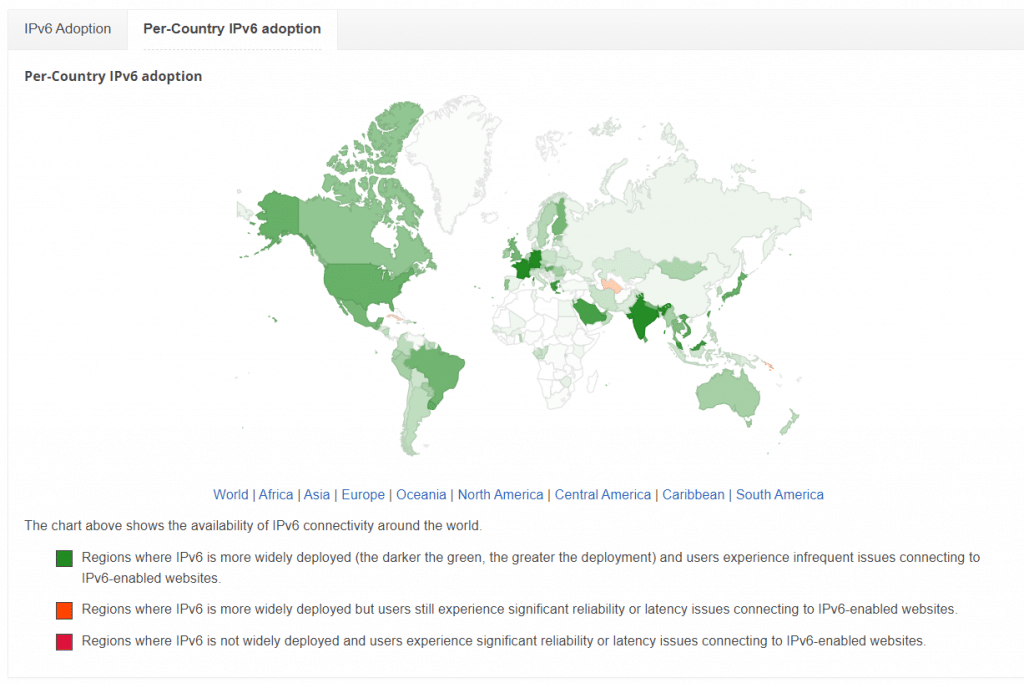So, why is it taking so long to switch from IPv4 addresses over to IPv6?
Let’s find out!
Have you ever wondered why the internet, which evolves faster than a speeding bullet, is taking so damn long to transition from IPv4 to IPv6?
I guess you have, otherwise, you wouldn’t be here.
It’s like planning to upgrade your old and trusty muscle car to a Tesla but never quite getting around to it for a variety of reasons.
That said, let’s find out the reasons behind this surprisingly slow journey from IPv4 to IPv6.
But first:
Table of Content
- IPv4 vs IPv6 – Brief History and Differences
- Why is it Taking so Long to Switch from IPv4 Addresses over to IPv6
- Final Words
1. IPv4 vs IPv6 – Brief History and Differences
IPv4 and IPv6 are like distant cousins in the family of internet protocols.
IPv4, the older one, has been around since the 1980s – think classic rock and long hair. It uses a 32-bit address system, which, back in the day, seemed like more addresses than we could ever use.
However, fast forward to the present, and we’re scraping the bottom of the IPv4 address barrel. Enter IPv6, with its 128-bit address system, offering a number of addresses so large, it makes the national debt look like pocket change.
Here’s how many IPv4 vs IPv6 addresses are there:

2. Why is it Taking so Long to Switch from IPv4 Addresses over to IPv6
Let’s see why the transition has been so slow.
a. TL:DR The Real Magnitude of the Transition
Switching from IPv4 to IPv6 isn’t just a simple update. It’s a complete overhaul. Imagine trying to replace every single road sign in the world, overnight.
That’s the scale we’re talking about.
Millions of devices, from your grandma’s old desktop to massive servers, need to make this leap. It’s a marathon, not a sprint.
b. Compatibility Issues
IPv4 and IPv6 talking to each other is like trying to have a conversation between someone who only speaks Latin and someone who only speaks Russian. They’re just not on the same page. This means maintaining a bilingual internet, where devices speak both IPv4 and IPv6, which is as complicated as it sounds.
c. IPv4 is Still Working
Thanks to clever workarounds like Network Address Translation (NAT), the IPv4 apocalypse has been postponed. Sure, it’s a temporary fix, but it’s bought us some time.
d. The Cost
Upgrading to IPv6 isn’t cheap. For many businesses, especially smaller ones, this cost is about as welcome as a skunk at a garden party.
While IPv6 addresses themselves are many and relatively inexpensive, the real cost lies in the transition process. It’s not just about getting a new and shiny IPv6 address, it’s about ensuring that everything connected to that address is ready for the change.
Hardware
The hardware that forms the backbone of our internet infrastructure was primarily designed with IPv4 in mind. This includes routers, switches, and modems in data centers, businesses, and homes.
Upgrading this hardware to be IPv6 compatible is like replacing the engine of an old car with a modern, more efficient one. As we all know, it’s not just a simple swap – it often requires replacing entire systems, which is usually expensive.
Software
On the surface, updating software might seem straightforward (and free). However, the reality is way more complicated.
Many legacy systems and applications are deeply entrenched in IPv4. Configuring them to work with IPv6 is not always a walk in the park.
It’s like trying to teach an old dog new tricks – it’s possible, but it requires time, patience, and often, significant investment. This includes not only the cost of the software itself but also the manhours involved in implementing, testing, and ensuring everything is working smoothly.
e. Employee Training
The transition to IPv6 also involves a human element.
I bet you wouldn’t ask a car mechanic to fix your plumbing at home, right? Of course, they can do it, but the end result may be catastrophic.
It’s the same with your IT team. The people in it need to be trained in IPv6 protocols, which is an investment in both time and resources.
This training is crucial, as a lack of expertise can lead to costly mistakes or inefficiencies during the transition.
f. Downtime
Transitioning to IPv6 doesn’t happen in a vacuum.
It has a ripple effect.
For example, when upgrading your business systems, you’ll probably need to temporarily reduce or disable certain services. To avoid this, some businesses use backup systems or parallel ones.
Each of these options impacts the revenue. And you guessed correctly – not in a positive way.
g. The Learning Curve
Switching to IPv6 is like learning a new language late in life. It’s doable, but it comes with a lot of “How do you say that…?” moments. Network professionals on a global scale need to understand IPv6’s new features and settings, which takes time and patience (and a lot of cursing and several drinks).
h. Slow Global Adoption
While people are rushing to adopt AI, colonize Mars, and find new ways to entertain themselves, the switch from IPv4 to IPv6 isn’t at the top of the priority list.
However, it’s fair to say that the rate of adoption varies significantly from region to region. In some parts of the world, like North America and parts of Europe, IPv6 adoption is relatively advanced, thanks to proactive initiatives and infrastructure investments.
On the other hand, in many other regions, the adoption is still in its infancy. These disparities are often due to differences in economic resources, technical expertise, and the age of existing internet infrastructure.

i. If it Ain’t Broke, Don’t Fix it
This is arguably the main reason why it is taking so long to switch from IPv4 addresses over to IPv6.
As long as IPv4 continues to function adequately with workarounds like NAT, the urgency to switch to IPv6 diminishes. This attitude slows down the adoption process, as it pushes the IPv6 transition lower down the list of priorities.
Combine this with the lack of coordination from ISPs, governments, and private organizations, and you have the answer to why you’ve clicked on this page in the first place.
3. Final Words
The shift from IPv4 to IPv6 is a bit like the tech version of “The Hare and the Tortoise.”
It’s a slow and steady race, packed with technical complications, financial calculations, and a global coordination challenge.
Still, just like in the fable, slow and steady wins the race. Sooner rather than later, IPv6 will become the norm, and we’ll look back at IPv4 the same way we look at floppy disks and dial-up modems.
So there you have it. That’s why it is taking so long to switch from IPv4 addresses over to IPv6.
0Comments